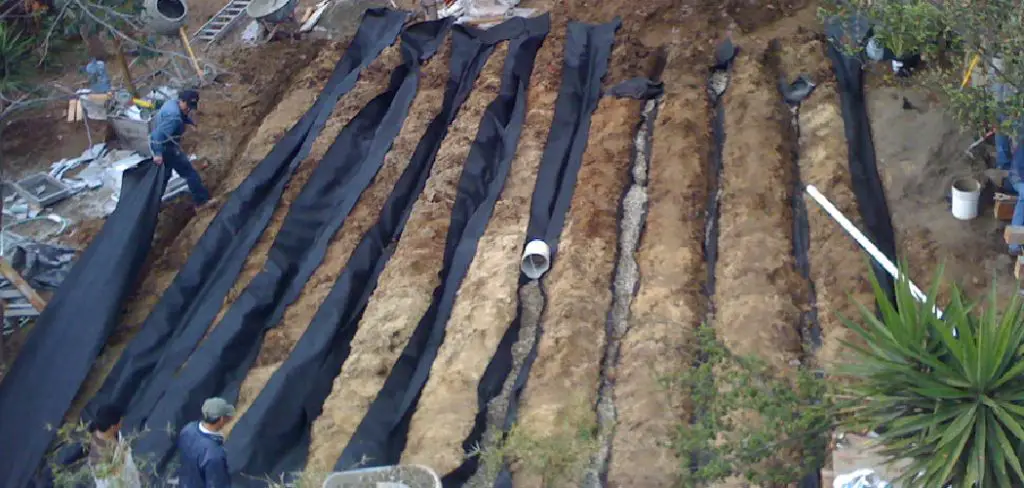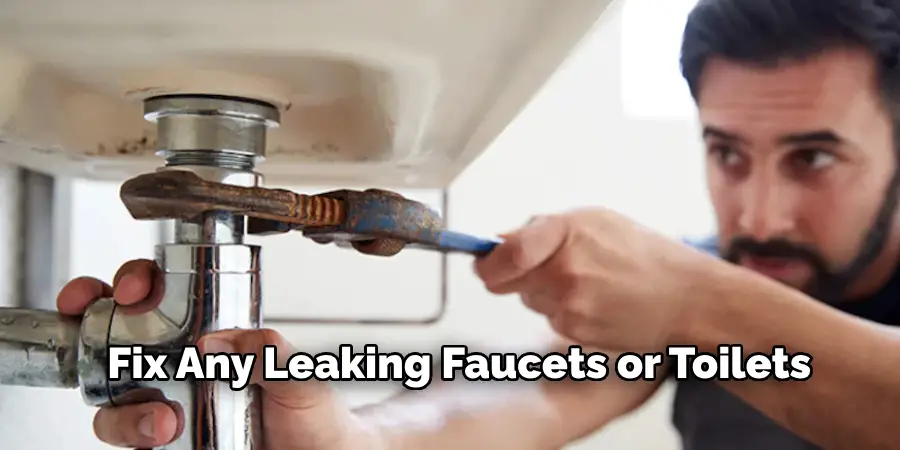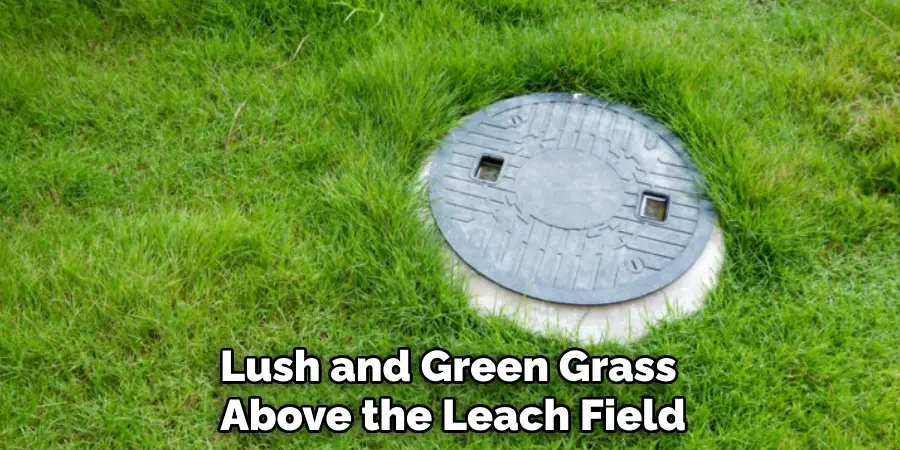Maintaining a leach field is crucial for the proper functioning of your septic system. A leach field, also known as a drain field or absorption area, is an underground wastewater disposal system that removes impurities from the liquid waste coming from your septic tank.
It consists of a series of perforated pipes buried in gravel-filled trenches and is where final treatment of the wastewater takes place before it gets released into the surrounding soil.

The main purpose of a leach field is to properly dispose of the wastewater that comes from the septic tank. It’s an essential part of a septic system and requires proper maintenance to ensure its longevity and efficiency. In this section, we’ll discuss some advantages of knowing how to maintain In this blog post, You will learn in detail how to maintain a leach field.
Steps for How to Maintain a Leach Field
1. Understand the Purpose of a Leach Field
A leach field, also known as a septic drain field, is an important component of a septic system. Its purpose is to treat wastewater from a septic tank and disperse it into the surrounding soil. By understanding its purpose, you can better appreciate why proper maintenance is crucial.
2. Know When Your Leach Field Needs Maintenance
A well-maintained leach field can last for decades. However, it’s important to know when your leach field needs maintenance. Signs of a failing leach field include slow drains, foul odors in and around your home, and standing water near the septic tank or drain field.
3. Identify the Location of Your Leach Field
Before you begin maintenance, it’s important to know the location of your leach field. This will help you avoid causing damage while performing maintenance tasks. If you’re unsure about the location, contact a professional for assistance.
To ensure proper functioning and longevity of your leach field, it’s important to keep it clear of any obstructions. Avoid driving or parking on top of it, building structures above it, or planting trees and shrubs near it.
4. Practice Water Conservation
To prevent overloading your leach field, practice water conservation in your household. Fix any leaking faucets or toilets, install low-flow fixtures, and avoid excessive use of the washing machine or dishwasher. This will help prolong the lifespan of your leach field.

The septic tank is where solid waste settles and decomposes, while liquid waste flows into the leach field. To prevent solids from clogging your leach field, it’s important to regularly pump your septic tank every 3-5 years.
5. Avoid Flushing Harmful Substances
Certain substances can harm your septic system and leach field, leading to costly repairs. These include grease, oil, chemicals, medications, and non-biodegradable items. Dispose of these properly instead of flushing them down the drain.
Regularly inspecting your leach field can help identify any potential issues early on. Look for signs of standing water, soggy areas, foul odors, or unusually green grass above the leach field. If you notice any of these, contact a professional for further inspection.
6. Hire Professionals for Maintenance and Repairs
When it comes to maintaining your leach field, it’s best to leave it to the professionals. They have the knowledge, experience, and equipment to properly maintain and repair your leach field. Attempting to do it yourself may cause more harm than good.
Lastly, it’s important to keep records of any maintenance or repairs done on your leach field. This will help you track its condition over time and identify any patterns or recurring issues. It will also be useful when selling your property, as potential buyers may request these records.
By following these steps, you can prolong the lifespan of your leach field and ensure its optimal performance. Remember to always prioritize proper maintenance and consult a professional when needed. So, these are the important 10 steps to maintain a leach field properly.

Safety Tips for How to Maintain a Leach Field
- Never enter a septic tank or leach field without proper training and equipment. The gases and bacteria present can be harmful.
- Wear protective gear, such as gloves and boots, when performing maintenance tasks.
- Avoid using harsh chemicals that can kill the beneficial bacteria in your septic system.
- Do not attempt to repair or replace damaged pipes yourself. Hire a professional for these tasks.
- Keep children and pets away from the leach field to prevent accidents and damage.
- Do not plant trees or build structures on top of the leach field as their roots can clog and damage the pipes.
- Regularly check for any signs of failure or malfunction, and address them promptly to avoid costly repairs.
By following these safety tips, you can maintain your leach field safely and prevent any accidents or damage. Remember, safety should always be a top priority when performing maintenance tasks on your septic system.
What Are Some Signs That a Leach Field Needs Maintenance?
- Slow draining sinks, bathtubs, or toilets: This can indicate that the leach field is clogged and not able to properly disperse water.
- Foul odors in and around your home: A failing leach field can cause unpleasant smells due to the untreated wastewater being released into the ground.
- Standing water near the septic tank or drain field: This can be a sign of clogged pipes or a malfunctioning septic tank.
- Lush and green grass above the leach field: While this may seem like a good thing, it can actually indicate that the leach field is not properly dispersing water and is instead causing an overflow onto the surface.
- High levels of nitrates or bacteria in well water: If your property has a well, regular testing can indicate whether the leach field is functioning properly. High levels of nitrates or bacteria can be a sign of septic system failure.

If you notice any of these signs, it’s important to address them promptly by contacting a professional for maintenance and repairs. Ignoring these signs can lead to further damage and costly repairs. So, it is crucial to regularly check for these signs and address any issues as soon as possible.
Are There Any Environmental Concerns Associated With Maintaining a Leach Field?
While maintaining a leach field is an essential part of keeping your septic system running smoothly, it’s crucial to consider any potential environmental concerns that may arise. Leach fields are designed to filter and treat wastewater, but if not properly maintained, they can pose a risk to the environment.
One of the main environmental concerns associated with maintaining a leach field is groundwater contamination. Leach fields are generally located underground and rely on the natural filtration of soil to treat wastewater. However, if the leach field becomes clogged or damaged, untreated wastewater can seep into the surrounding groundwater. Here are some tips:
- Regularly pump your septic tank. This will help prevent solids from entering the leach field and clogging it.
- Avoid disposing of harmful chemicals or excessive amounts of water into your septic system. This can disrupt the balance of bacteria in the septic tank and harm the leach field’s ability to treat wastewater.
- Be mindful of what you plant near your leach field. Certain trees and shrubs have roots that can penetrate and damage the pipes in the leach field, leading to potential leaks. Consult with a professional before planting anything near your leach field.
- Monitor your leach field for any signs of damage or malfunction, such as pooling water or foul odors. If you notice any issues, contact a septic system professional immediately.
Proper maintenance of your leach field not only ensures the proper functioning of your septic system but also helps protect the environment. By following these tips and regularly scheduling professional maintenance, you can help minimize any potential environmental concerns associated with your leach field.

Are There Any Specific Techniques or Tools That Can Help With Maintaining a Leach Field?
Yes, there are some techniques and tools that can aid in maintaining a leach field. These include:
- Hydro-jetting: This is a cleaning method that uses high-pressure water to clear out any clogs or buildup in the pipes of your leach field.
- Aeration systems: These systems help introduce more oxygen into the septic tank, which promotes the growth of beneficial bacteria that aid in the breakdown of solids.
- Drain cleaners: While it’s generally not recommended to use harsh chemicals, there are some eco-friendly drain cleaners specifically designed for septic systems that can help prevent clogs and maintain a healthy balance of bacteria.
- Septic tank risers and access ports: Installing these features makes it easier to access and maintain your septic tank and leach field, without having to dig up your yard every time.
Consult with a professional to determine the best techniques and tools for maintaining your specific leach field. They can also provide guidance on how often these methods should be used to prevent any damage or disruption to the natural balance of bacteria in your septic system.
Conclusion
In conclusion, maintaining a leach field is crucial for the proper functioning of your septic system. By following the steps outlined in this blog, you can ensure that your leach field stays healthy and avoids any costly repairs or replacements. Regular maintenance of your septic system, including regular pumping and inspection, will help prevent clogs and damage to the leach field.
It is also important to be mindful of what you flush down your toilets and drains, as certain materials can cause harm to the leach field. Remember to always consult a professional if you are unsure about any maintenance tasks or if you suspect an issue with your leach field.
With proper care and attention, your leach field can last for many years and keep your septic system running smoothly. I hope this article has been beneficial for learning how to maintain a leach field. Make Sure the precautionary measures are followed chronologically.

